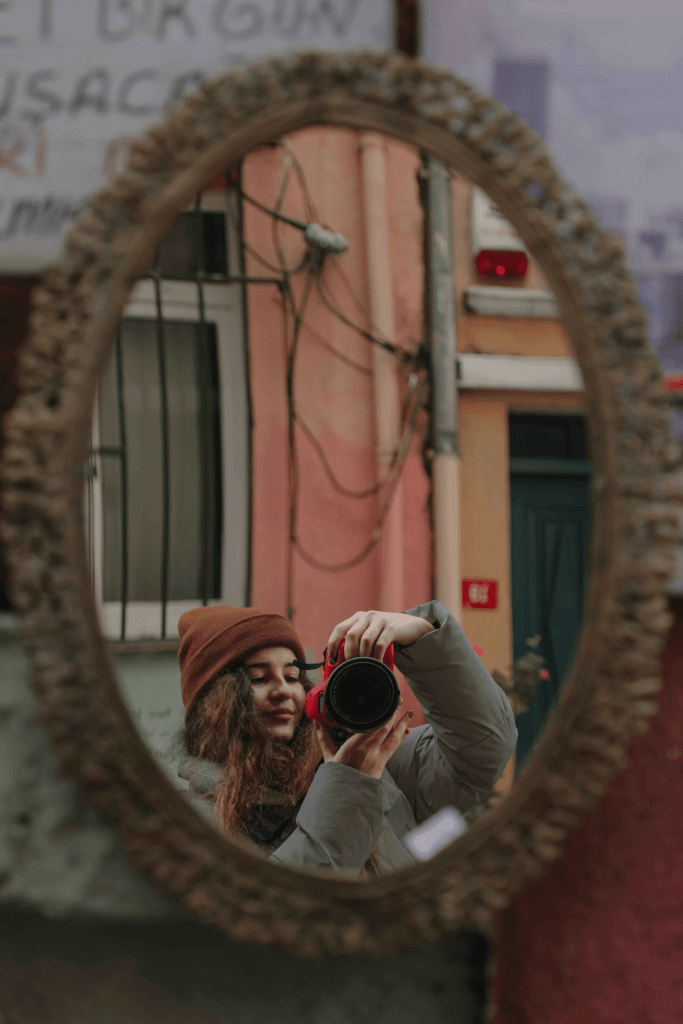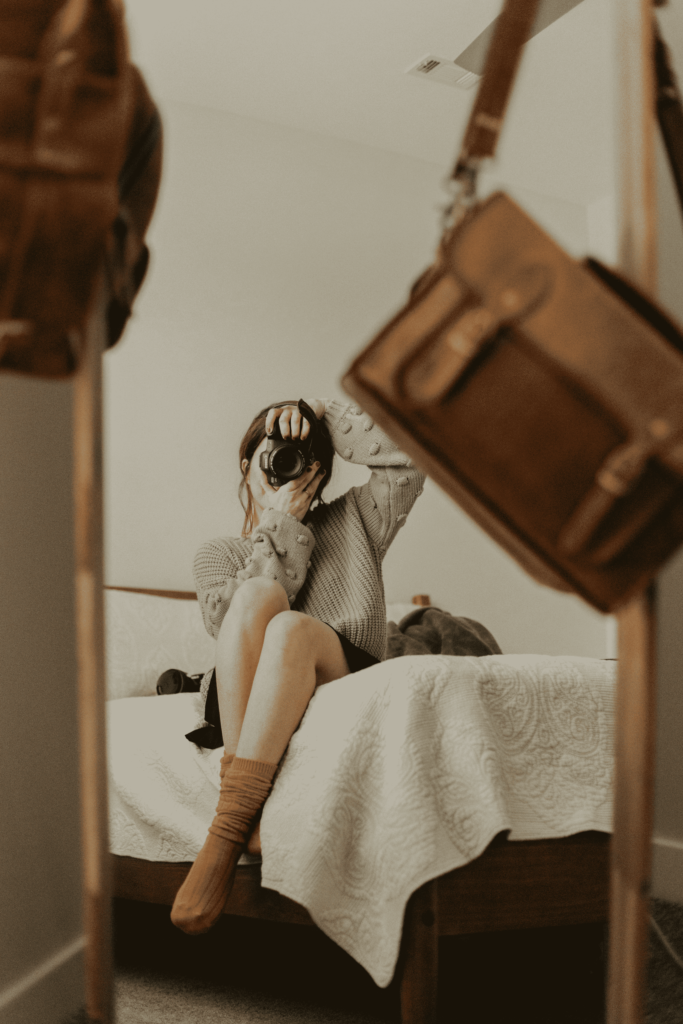Last updated on September 3rd, 2024 at 03:17 am
- Instagram and the Pursuit of the Perfect Image
- The Pressure of Perfection
- The Rise of “Instagrammable” Culture
- The Impact on Self-Perception
- Influencer Culture and Narcissism
- The Dark Side of Instagram Fame
- Twitter and the Need for Constant Validation
- The Echo Chamber Effect
- The Pursuit of Viral Tweets
- The Role of Retweets and Likes
- The Performative Nature of Twitter Discourse
- The Impact on Political Discourse
- TikTok and the Allure of Viral Fame
- The Pursuit of Viral Success
- The Impact on Self-Esteem and Body Image
- The Rise of TikTok Challenges
- The Performative Nature of TikTok Content
- The Impact on Attention Spans and Instant Gratification
- The Glorification of Wealth and Status
- Thank You For Reading. Did this first part pique your interest? There’s so much more to explore! We’ve only scratched the surface of how narcissism is impacting our world.
- Ready For More? Click Here To Read Other Parts!
Are you addicted to the dopamine rush of Instagram likes? Do you meticulously curate your Facebook feed to project a perfect life? Has your TikTok fame become an obsession? You’re not alone. We’re living in the age of digital narcissism, and it’s consuming us all.
Welcome to Part 10 of our deep dive into the narcissism epidemic sweeping across social media platforms. If you’ve been following this series, you know we’ve uncovered some shocking truths about how these digital playgrounds are reshaping our psyches. But buckle up, because we’re about to go even deeper.
In this installment, we’re pulling back the curtain on the latest trends in social media narcissism. From the rise of “finstas” on Instagram to the never-ending pursuit of viral fame on YouTube, we’ll explore how each platform is uniquely feeding our collective ego. We’ll dissect the psychology behind those perfectly posed LinkedIn headshots and the compulsive need to showcase our lives on Snapchat.
But here’s the kicker: this isn’t just about pointing fingers. It’s about understanding the monster we’ve created and finding a way to tame it. By the end of this post, you’ll have a new perspective on your digital habits and, more importantly, actionable strategies to break free from the cycle of self-obsession.
Ready to face the truth about your online persona? Let’s dive in and confront the narcissist


-By Som Dutt from https://embraceinnerchaos.com
Instagram and the Pursuit of the Perfect Image
Instagram, with its focus on visual content, has become synonymous with the pursuit of the perfect image. This platform has created a culture where users constantly strive to present an idealized version of themselves and their lives.
The Pressure of Perfection
On Instagram, users are bombarded with carefully curated images of seemingly perfect lives, bodies, and experiences. This creates immense pressure to conform to these unrealistic standards. A study by the Royal Society for Public Health found that Instagram was the worst social media platform for young people’s mental health, largely due to its impact on body image and self-esteem.
The constant exposure to edited and filtered images can lead to a distorted sense of reality. Users may begin to believe that the perfection they see online is attainable in real life, leading to feelings of inadequacy when they inevitably fall short.
The Rise of “Instagrammable” Culture
The desire for likes and followers has given rise to what’s known as “Instagrammable” culture. This phenomenon involves people seeking out experiences, locations, and even meals primarily for their photographic appeal on Instagram.
For example, a survey by Schofields Insurance found that 40% of millennials choose their travel destinations based on how “Instagrammable” they are. This shift in behavior demonstrates how the pursuit of the perfect image can influence real-world decisions and experiences.
The Impact on Self-Perception
The constant pressure to present a perfect image on Instagram can have significant psychological effects. A study published in the Journal of Social and Clinical Psychology found a strong link between Instagram use and increased symptoms of depression, particularly related to social comparison.
This platform’s emphasis on appearance and lifestyle can fuel narcissistic tendencies by encouraging users to focus excessively on their public image. The need for validation through likes and comments can become addictive, leading to a cycle of seeking ever-increasing amounts of attention and approval.
Influencer Culture and Narcissism
Instagram has given rise to the influencer phenomenon, where individuals gain large followings and often monetize their online presence. While not all influencers exhibit narcissistic traits, the nature of the role can encourage narcissistic behaviors.
A study published in the journal “Computers in Human Behavior” found that individuals with higher levels of narcissism were more likely to post selfies and update their profile pictures frequently on social media platforms like Instagram.
Influencers often present a highly curated version of their lives, which can contribute to feelings of inadequacy among their followers. This dynamic can create a cycle where both the influencer and their audience engage in increasingly narcissistic behaviors in pursuit of validation and attention.


-By Som Dutt from https://embraceinnerchaos.com
The Dark Side of Instagram Fame
While Instagram can provide a platform for creativity and connection, it can also fuel unhealthy narcissistic tendencies. The constant pressure to maintain a perfect image and gain followers can lead to anxiety, depression, and a distorted sense of self-worth.
A survey by the American Psychological Association found that 38% of young adults reported feeling bad about themselves after seeing others’ posts on social media. This highlights the potential negative impact of platforms like Instagram on mental health and self-esteem.
Twitter and the Need for Constant Validation
Twitter, with its fast-paced, text-based format, provides a unique environment for narcissistic behaviors to manifest. The platform’s emphasis on brevity and immediacy can fuel a constant need for validation and attention.
The Echo Chamber Effect
Twitter’s algorithm often shows users content that aligns with their existing views and interests. This can create an echo chamber effect, where users are primarily exposed to opinions that validate their own beliefs.
A study by the Pew Research Center found that 64% of Twitter users get news on the platform, with many relying on it as their primary news source. This reliance on a potentially biased information stream can reinforce narcissistic tendencies by constantly validating a user’s worldview.
The Pursuit of Viral Tweets
The potential for tweets to go viral and reach a massive audience can be intoxicating for users with narcissistic tendencies. The rush of seeing one’s thoughts amplified and validated by thousands or even millions of people can become addictive.
Research published in the journal “Personality and Individual Differences” found that individuals with higher levels of narcissism were more likely to post status updates about their achievements and to seek admiration through their posts on platforms like Twitter.
The Role of Retweets and Likes
Twitter’s retweet and like features provide instant gratification and validation. For individuals with narcissistic tendencies, these metrics can become a measure of self-worth.
A study published in “Cyberpsychology, Behavior, and Social Networking” found that individuals with higher levels of narcissism were more likely to check Twitter frequently and to experience distress when unable to do so. This suggests that the platform’s feedback mechanisms can fuel addictive and narcissistic behaviors.
The Performative Nature of Twitter Discourse
Twitter’s public nature encourages performative behavior. Users often craft tweets with the goal of gaining attention or appearing clever, rather than engaging in genuine discourse.
This performative aspect can amplify narcissistic tendencies by encouraging users to constantly seek the spotlight and position themselves as experts or thought leaders, regardless of their actual knowledge or experience.
The Impact on Political Discourse
Twitter has become a significant platform for political discourse, with many politicians and public figures using it as a primary means of communication. This has led to a style of political engagement that can be characterized by narcissistic traits such as grandiosity and a lack of empathy.
A study published in the “Journal of Public Economics” found that politicians’ use of Twitter was associated with increased polarization among their followers. This suggests that the platform’s format may encourage narcissistic behaviors not just in individuals, but in broader societal discourse.
TikTok and the Allure of Viral Fame
TikTok, the rapidly growing short-form video platform, has created new avenues for narcissistic behaviors to manifest. The platform’s emphasis on viral content and instant fame can be particularly attractive to individuals with narcissistic tendencies.
The Pursuit of Viral Success
TikTok’s algorithm is designed to surface content from any user, regardless of their follower count. This creates the tantalizing possibility of achieving instant fame through a single viral video.
A study by Influencer Marketing Hub found that TikTok has an engagement rate of 17.96%, significantly higher than other social media platforms. This high engagement rate can be incredibly appealing to narcissistic individuals seeking attention and validation.
The Impact on Self-Esteem and Body Image
Like Instagram, TikTok heavily features content focused on appearance and lifestyle. However, the video format and popular dance and lip-sync trends on TikTok can create even more pressure around body image and performance.
A survey by The Center for Countering Digital Hate found that TikTok’s algorithm can push content related to eating disorders and extreme diets to young users within minutes of them expressing interest in weight loss. This highlights the potential for platforms like TikTok to exacerbate body image issues and fuel narcissistic behaviors related to appearance.


-By Som Dutt from https://embraceinnerchaos.com
The Rise of TikTok Challenges
TikTok’s viral challenges can encourage risky or attention-seeking behavior. While many challenges are harmless fun, some can be dangerous or promote narcissistic tendencies.
For example, the “Skull Breaker Challenge” that went viral on TikTok in 2020 led to numerous injuries and highlighted how the pursuit of viral fame can override common sense and empathy for others.
The Performative Nature of TikTok Content
TikTok’s short video format encourages highly performative content. Users often create exaggerated or idealized versions of themselves or their lives in pursuit of likes and followers.
A study published in the “International Journal of Environmental Research and Public Health” found that excessive use of TikTok was associated with higher levels of narcissism and lower self-esteem among young adults.
The Impact on Attention Spans and Instant Gratification
TikTok’s rapid-fire content delivery can fuel a need for constant stimulation and instant gratification. This aligns with narcissistic tendencies towards impatience and a need for immediate attention.
Research published in the “Journal of Behavioral Addictions” suggests that the short-form video format of platforms like TikTok can be particularly addictive, potentially exacerbating narcissistic behaviors and attention-seeking tendencies.
The Glorification of Wealth and Status
Many popular TikTok trends involve showcasing wealth, luxury items, or exclusive experiences. This can fuel narcissistic fantasies of grandiosity and reinforce the idea that self-worth is tied to external markers of success.
A report by the UK’s The Times quoted psychologists warning that TikTok is fueling a “culture of narcissism” among young people, with its emphasis on self-promotion and instant fame.
In conclusion, social media platforms like Instagram, Twitter, and TikTok have created unprecedented opportunities for narcissistic behaviors to flourish. While these platforms offer many benefits, including connection and creative expression, they also have the potential to fuel unhealthy narcissistic tendencies.
The pursuit of the perfect image on Instagram, the constant need for validation on Twitter, and the allure of viral fame on TikTok all tap into aspects of narcissism. As these platforms continue to evolve and dominate our digital landscape, it’s crucial to be aware of their potential impact on our psychology and behavior.
Thank You For Reading. Did this first part pique your interest? There’s so much more to explore! We’ve only scratched the surface of how narcissism is impacting our world.
Continue your journey through all 26 parts of this series to gain a comprehensive understanding on the bigger picture.
Each part builds on the last, providing you with a nuanced and thorough exploration of this complex issue. Don’t miss out on the full picture.
Ready For More? Click Here To Read Other Parts!
The Narcissism Epidemic: How Self-Obsession Is Reshaping Society Part 1
The Narcissism Epidemic: Why Younger Generations More Narcissistic? Part 2
The Narcissism Epidemic: How Technology Is Fueling the Flames of Narcissism Part 3
The Narcissism Epidemic: Navigating Narcissism at Workplace Part 4
The Narcissism Epidemic: The Impact of Narcissistic Leadership on Company Culture Part 5
The Narcissism Epidemic: Fame, Fandom, and Celebrity Culture Part 6
The Narcissism Epidemic: How Media Cultivates Celebrity Worship Part 7
The Narcissism Epidemic: The Impact of Celebrity Narcissism on Society Part 8
The Narcissism Epidemic: How Social Media Feeds Your Inner Narcissist Part 9
The Narcissism Epidemic: Social Media and Self-Obsession Part 10
The Narcissism Epidemic: The Dark Side of Social Media Validation Part 11
The Narcissism Epidemic: When Parents’ Self-Absorption Affects Their Children Part 12
The Narcissism Epidemic: The Effects of Narcissistic Parenting on Children Part 13
The Narcissism Epidemic in Leadership: Brilliance or Tyranny? Uncover the Paradox Part 14
The Narcissism Epidemic: The Dark Side of Narcissistic Leadership Part 15
The Narcissism Epidemic: The Dark Side of Internet Fame: From Influence to Ego Part 16
The Narcissism Epidemic: The Role of Social Media Influencers in Promoting Narcissism Part 17
The Narcissism Epidemic: The Influencer-Narcissism Connection Exposed Part 18
The Narcissism Epidemic: How Does Narcissism Fuel (or Hinder) Artistic Genius? Part 19
The Narcissism Epidemic: The Impact of Narcissism on Artistic Process Part 20
The Narcissism Epidemic: When Artist Egos Overshadow Their Work Part 21
The Narcissism Epidemic: The Dark Side of Charismatic Politicians Part 22
The Narcissism Epidemic in Politics: When Ego Drives Policy Part 23
The Narcissism Epidemic: The Impact of Narcissistic Leadership on Governance Part 24
The Narcissism Epidemic of Economics: Consumerism and Self-Image Part 25
The Narcissism Epidemic: The Impact of Narcissism on Individuals and Society Part 26



